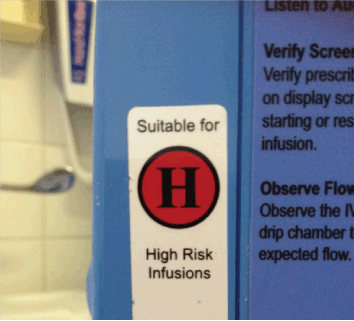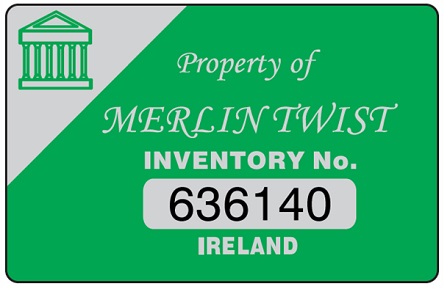A few days ago, it emerged that Tata Steel had been fined over £2m, after two serious incidents occurred at its Northamptonshire site. Both of these involved workers sustaining severe hand injuries, as a result of avoidable contact with dangerous machinery.
The first of these incidents involved a 26 year old worker, who lost the middle and ring fingers on his left hand, after trying to clear a blockage on a manufacturing line with unsuitable guarding. The second incident occurred in 2015, when a 52 year old lost part of his little finger after it became caught in a lathe, again, due to unsuitable guarding on the machinery.
Although a spokesman for Tata was quoted as stating that health and safety is the company's most important priority, serious questions must be raised after two near identical incidents took place within months of one another, on the same premises no less! It is clear from the evidence found upon inspection by the HSE, that there was an obvious neglect of duty in terms of properly identifying the serious risks posed to Tata workers, as well as a failure to resolve this issue after the first incident occurred.
It shouldn't take a serious injury or fatality to make a company take their health and safety procedures seriously, and one would hope that it wouldn't take multiple incidents for a company to implement serious changes. Perhaps the only consolation going forward, is that other companies will be struck by the severity of the issue, and therefore implement better prevention strategies in their own workplaces.
For anyone concerned with avoiding the mistakes made by Tata, remember to follow a simple but impactful health and safety strategy:
- Educate - Ensure that staff are thoroughly trained before operating dangerous machinery, or performing hazardous tasks without supervision.
- Inform - Make staff aware of the risks involved in their operations, displaying safety signs and warnings to keep the message fresh in people's minds.
- Protect - Ensure that the correct safety features are in place to minimise potential risks, and provide the required personal protective equipment.
- Asses - Regularly evaluate the level of safety in your workplace, and identify any potential risks that require preventative action.
For more health and safety news and advice, follow us on Twitter, Facebook & Google+
Over the years, we at Label Source have worked with many clients in both the NHS and the private hospital sector. We provide these customers with a range of fit-for-purpose medical equipment labels for hospitals, included custom-printed labels as well as a variety of different items from our standard product ranges.

We have worked with many different departments who have used our medical equipment labels for hospitals, including:
- EBME
- Electronics
- Engineering
- Bio-Medical
- Building Services, Facilities & Estates
- IT & Computer Services
What are our medical equipment labels for hospitals suitable for?
The labels we supply can be used in the testing, servicing, maintenance and calibration of medical equipment. They are suitable for mechanical, electrical (including PAT testing), and radiation equipment. Additionally, many of the labels we provide are used to identify ownership and improve traceability of medical equipment (as well as plant and ancillary equipment) via serial numbers or barcodes. Our labels can also be used to simply identify the prescribed use of the equipment in question.
All of our medical equipment labels for hospitals are designed to meet the unique challenges that take place in a clinical environment. They are resistant to solvents, chemicals and scratches, with a wipe-clean surface for optimum hygiene.
Browse the Label Source website to find the medical equipment labels for hospitals you need, or get in touch via one of the methods below to discuss your labelling requirements with a member of our team.
- Email:info@labelsource.co.uk
- Telephone (UK only): 0800 3761 693
- Telephone (Rest of the World): 0044 1443 842769
Here are some of the other products we supply to the healthcare sector:
The dangers of asbestos are a subject we've covered time and again here on the Label Source blog, but we're continuing to see story after story about people who don't take those dangers seriously enough, and about the consequences that this attitude can lead to.
The latest such story was publish only today by the Worcester News.

Story and photograph from www.worcesternews.co.uk
Back in October 2013, Christopher Whitehead Language College in Worcester hired two 18-year-old workers to remove an asbestos roof from a small lean-to building on the school grounds. The pair accomplished this by knocking the asbestos down from atop the building before double-bagging the material and disposing of it.
If you've ever heard the line about how 'asbestos is perfectly safe as long as it isn't disturbed'*, you'll spot the problem with this method right away. By knocking the asbestos roof down, the two workers at Christopher Whitehead School no doubt released a great number of asbestos fibres into the air and risked inhaling them. While asbestos exposure causes no instantaneous harm, more than 4 thousand people die every year in the UK from slow-acting asbestos-related conditions such as mesothelioma. And while the work was carried out during the October half-term holiday, this doesn't necessarily mean that the two workmen were the only people at risk here, as this story from the British Lung Foundation illustrates.
So here we are, saying it again: asbestos fibres are deadly and every measure should be taken in order to keep them from being released into the air and potentially breathed in. Knocking apart an asbestos roof is very dangerous; indeed, this was recognised in a complaint about the work at Christopher Whitehead School by public service union Unison. This complaint was upheld by the Health and Safety Executive, who reprimanded the school for poor health and safety practices.
Click here for more information on how to deal with asbestos safely, or visit our Asbestos Signs & Labels department to browse our full range of asbestos safety products.
*From the HSE's web page on asbestos: "As long as asbestos is in good condition and is not disturbed there is negligible risk. However, if it is disturbed or damaged, it can become a danger to health, because asbestos fibres are released into the air and people may breathe them in."

If your business is based in the Republic of Ireland and you need high-quality asset tags produced to your own unique specifications, we at Label Source can help. We frequently supply bespoke asset tags to clients in Ireland, and no matter what you require, we are confident that our experienced design team are capable of providing a suitable solution.
We offer the following options for customers ordering asset tags from the Label Source website:
- Materials: aluminium foil, self-adhesive polyester, self-adhesive vinyl, tamper-evident polyester, tamper-proof destructible vinyl
- Numbering Systems: code 128 bar codes, code 39 bar codes, interleaved 2 of 5 bar codes, numbering only, no numbers/bar codes
- Custom text, specified by yourself
- A wide variety of sizes and colours
Our asset tags are supplied in rolls of 500 labels per pack. Delivery charges for the Republic of Ireland are as follows:
- Order Value £20-£49.99 // Delivery Cost £17.85
- Order Value £50-£99.99 // Delivery Cost £20.95
- Order Value £100-£249.99 // Delivery Cost £24.40
- Order Value £250-£499.99 // Delivery Cost £31.30
- Order Value £500-£999.99 // Delivery Cost £39
Click here to browse our full range of asset tagging products, or visit our Asset Tag Builder if you'd like to customise your tags yourself.
There was worrying news from the HSE (Health & Safety Executive) this week: workplace fatalities are becoming more common in the United Kingdom, with 2015/16 seeing a slight increase in deaths compared to 2014/15.
According to provisional figures, there have been 144 workplace fatalities in the UK over the past 12 months - that's 2 more than the 2014/15 total of 142 (source). Not a huge difference, you may think, but it's shocking to learn that the annual number of fatal accidents has gone up at all; with safety practices now better (and regulations stricter) than ever, we really ought to be seeing a sizeable decrease in workplace deaths from one year to the next.
Chris Green, a partner at a law firm based in Liverpool, responded to the HSE's latest figures with the following statement (originally published on www.liverpoolecho.co.uk):
"One death in the workplace is too many and employers must do more to ensure the safety of their staff when on the job. Initiatives such as visible boardroom involvement and leadership of safety culture programmes have been shown to reduce accidents at a time when the costs of not doing enough to ensure safety are higher than ever before."
It is somewhat depressing to have to revisit this lesson so soon after Health & Safety Week, but this news demonstrates that the theme for H&S Week 2016 - 'Inspiring excellence in health & safety' - is one that a lot of UK businesses could stand to think about. "Employers must do more", said Mr Green, and unless we as a country want to see that annual death toll continue to rise, we all need to ask ourselves if there's more we could be doing in our own offices, warehouses, and work sites. Have you identified all potential risks that your employees face? What are you doing to address those risks and prevent the worst from happening?
For more health and safety commentary and insight, be sure to follow Label Source on Twitter or Facebook.